Pros: Class-leading spaciousness; excellent available tech; true luxury interior in Grand Wagoneer
Cons: High price; poor fuel economy; no serious off-road variants
The 2023 Jeep Wagoneer and its luxurious counterpart, the Grand Wagoneer, are already expanding their offerings one year after the nameplate’s rebirth. This full-size, three-row SUV gets even more spacious with the introduction of the Wagoneer L and Grand Wagoneer L, which feature a longer wheelbase and an entire foot of extra length. Jeep also added a new engine to the lineup: the “Hurricane” twin-turbo inline-6 with two different outputs available, making it even more competitive against the likes of the Chevy Tahoe/Suburban, GMC Yukon, Cadillac Escalade, Ford Expedition and Lincoln Navigator. Whether or not “Grand” appears in the badging, the Wagoneer is indeed grand in its size and execution.
It’s underpinned by the same truck platform as the Ram 1500 pickup, but hides that part of its lineage under a design language that is Jeep at its core while taking the look in an even more upscale direction. It doesn’t sacrifice utility by doing so, though. The Wagoneer L is massive, with 44.2 cubic feet of cargo space behind the third row, besting the Expedition Max and Suburban. There’s no Trailhawk or even Trail Rated version, but the Wagoneer can still hold its own when the road disappears thanks to an available two-speed transfer case, air suspension, tow hooks, skid plates and all-terrain tires. The Wagoneer can also tow up to 10,000 pounds when properly equipped.
While we were already bullish on this revival of the Wagoneer name thanks to its size, styling, tech and available high-luxury interior, the addition of a more fuel-efficient engine and long-wheelbase options make this big Jeep even more appealing.
Interior & Technology | Passenger & Cargo Space | Performance & Fuel Economy
What it’s like to drive | Pricing & Trim Levels | Crash Ratings & Safety Features
What’s new for 2023?
The big news for 2023 is the addition of a extended-length version of the Wagoneer and Grand Wagoneer, called Wagoneer L and Grand Wagoneer L, respectively. The L models add 7 inches between the wheels, and 12 inches to the overall length of the vehicle.
Also new for 2023 is the availability of two versions of the “Hurricane” 3.0-liter twin-turbocharged inline-six engine. You can read more about that in the “fuel economy and performance specs” section further down the page.
Other than that, there is some minor streamlining of the available trim levels.
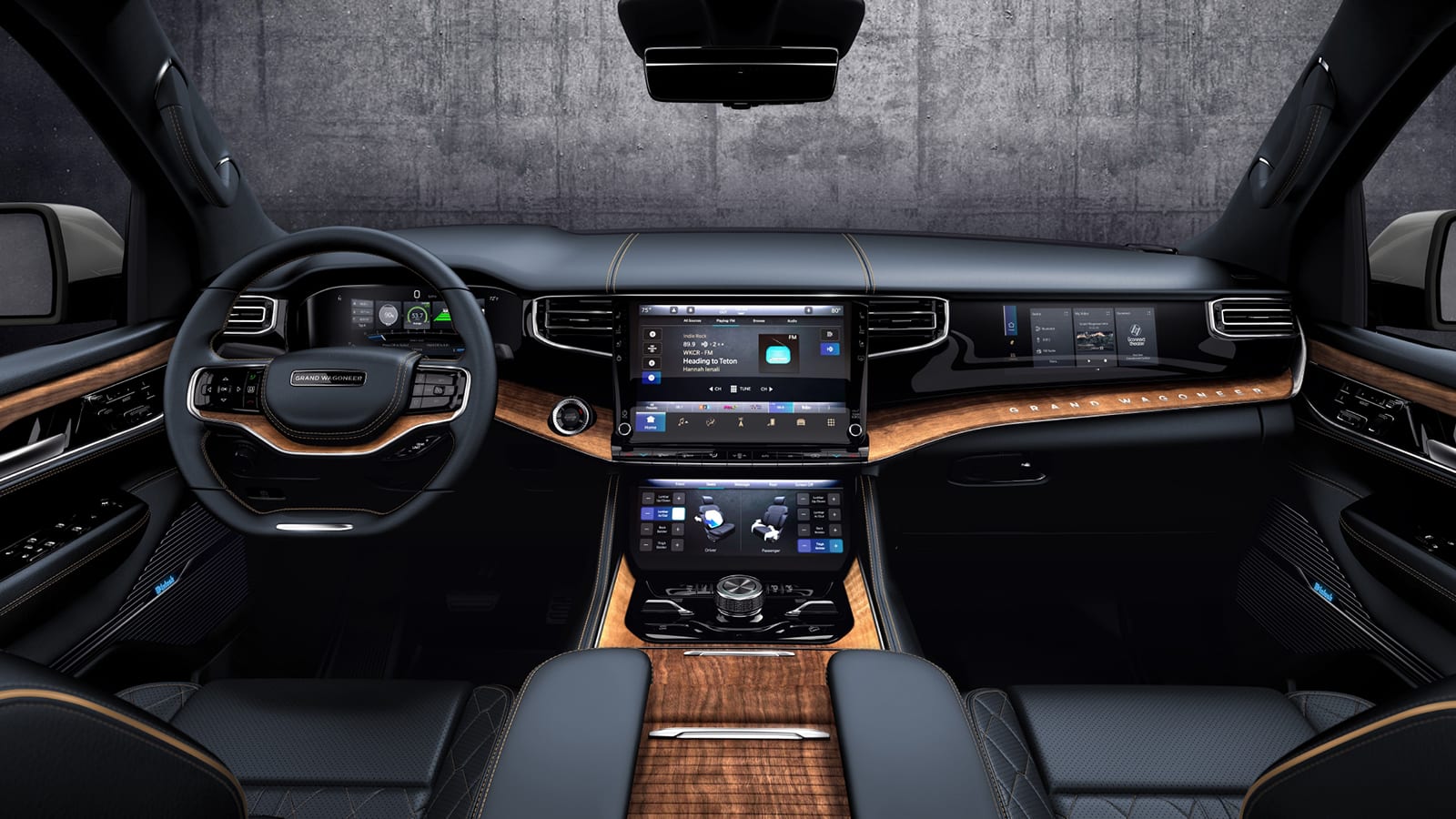
What are the Wagoneer interior and in-car technology like?
The Grand Wagoneer’s cabin is bound to get most of the attention with its lavish materials and staggering feature content. It may not offer the Escalade’s vast OLED touchscreen extravaganza or the Navigator Black Label’s sumptuous design, but it still manages to be just as impressively luxurious despite being from a brand that’s not technically a luxury one.
The cheaper Wagoneer is bound to find more homes, however, and in a way, it’s actually even more impressive. It has the same cabin design as the Grand Wagoneer (pictured above) – its materials just aren’t as ritzy, nor its feature content as staggering. Compared to a Tahoe or Expedition, however, which have completely different cabins than their Cadillac and Lincoln cousins, the Jeep has a clear advantage.
As for technology, it can certainly overwhelm given the sheer quantity available, but at least it’s mostly controlled by the latest, user-friendly Jeep Uconnect user interface. There’s the central infotainment display (10.1 inches in the Wagoneer and 12 inches in the Grand Wagoneer) and the standard digital instrument cluster (10.25 inches for the Wagoneer and 12.3 for the Grand). Some models also have touchscreens dedicated to the climate control system and seats in the front and in the rear. One can also spec a touchscreen for the front passenger and a rear-seat entertainment system with dual 10.1-inch screens. So, seven in total — and that’s not even counting the digital rear camera mirror or the head-up display.
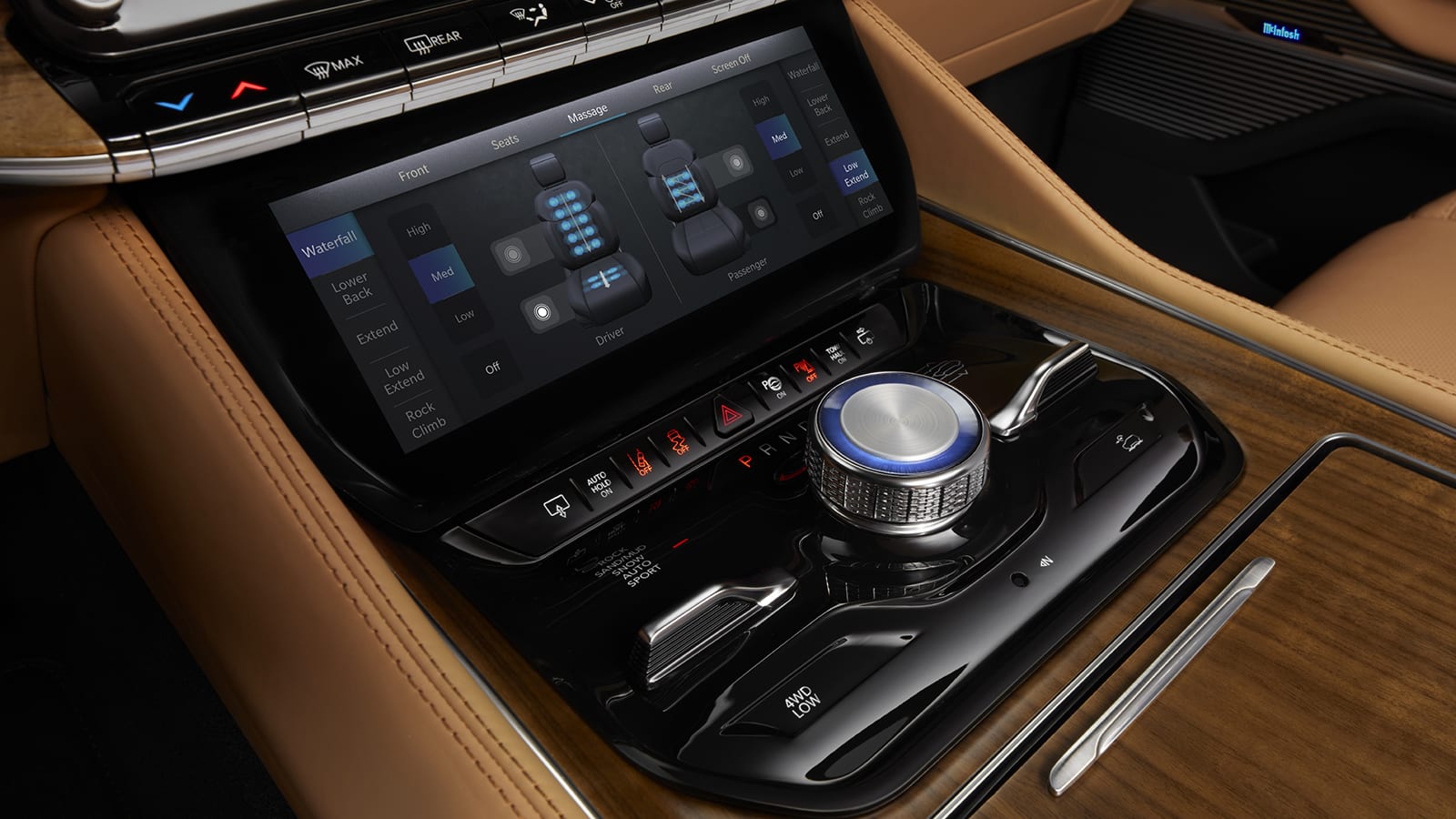
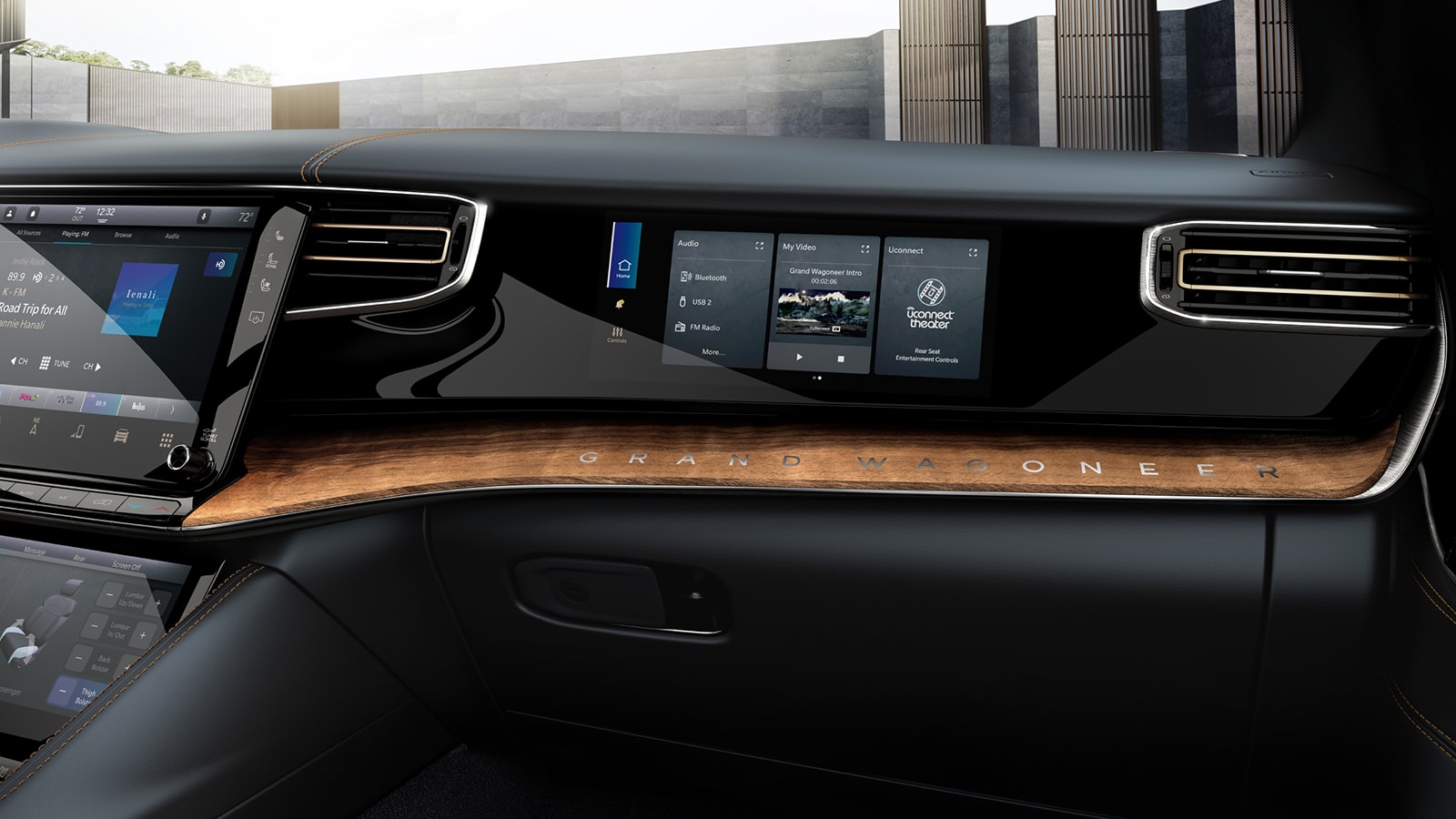
How big is the Wagoneer and Wagoneer L?
The standard-length Wagoneer and Grand Wagoneer are actually the same size, which stretches 4 inches beyond the Tahoe/Yukon/Escalade and Expedition/Navigator. This translates into appreciable benefits inside, especially in the third row. While both the GM and Ford full-sizers now offer genuinely comfortable space in the way back for even those taller than 6 feet, the big Jeep actually manages to surpass them slightly in terms of space. It also does a better job of extending the rest of the cabin’s luxurious feel into the third row. We doubt there’s a nicer third row out there.
The Wagoneer also enjoys a cargo advantage. That extra length grants it more space behind the raised third row than the Tahoe/Yukon/Escalade and Expedition/Navigator. Specifically, we could fit all six bags of our luggage test back there — we couldn’t manage that in the others. In terms of space with the third- or second-row down, we’re talking degrees of enormous here. Ditto second-row passenger space. Note than an eight-passenger, 2/3/3-oriented seating arrangement is standard on the Wagoneer and optional on the Grand Wagoneer. A seven-passenger, 2/2/3 arrangement is standard on the Grand and optional on the Wagoneer.
The 2023 Wagoneer L and Grand Wagoneer L are new for 2023, with a longer wheelbase and even more room inside than the standard versions. With a total of 12 more inches in overall length, the amount of stuff the cargo area can easily swallow is impressive, as Senior Editor James Riswick found when he moved houses in a Grand Wagoneer L.
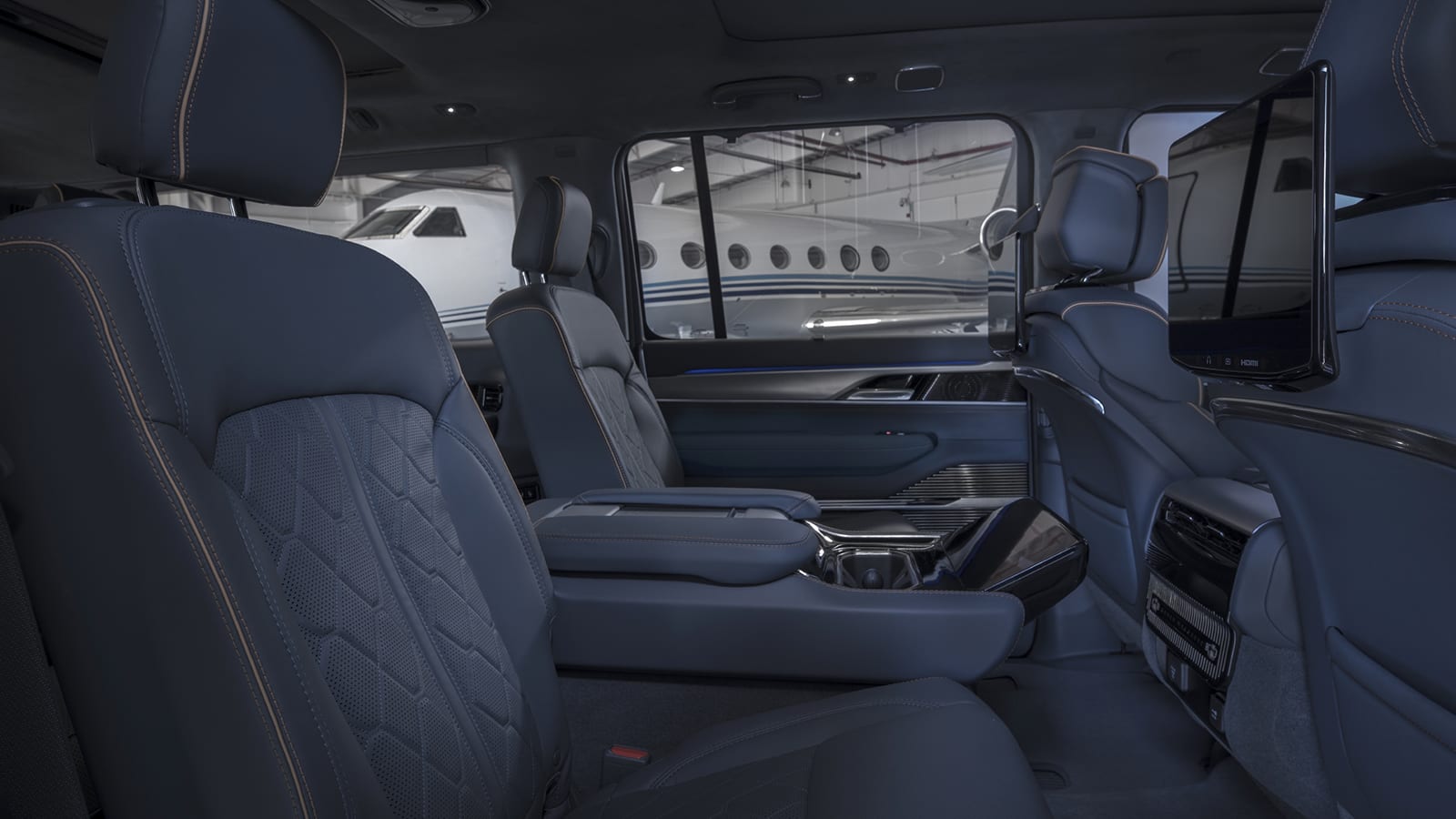

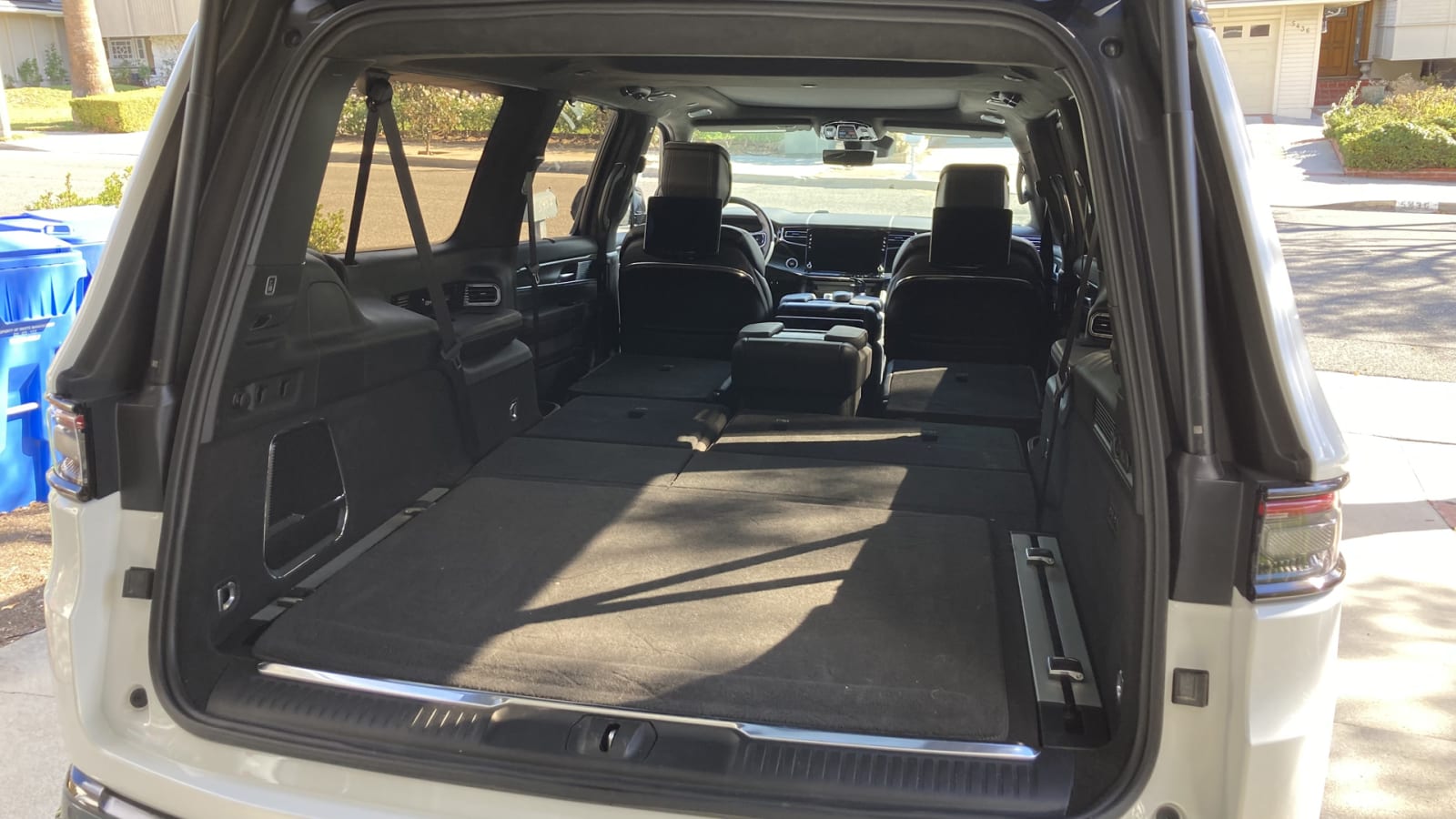
What are the Wagoneer fuel economy and performance specs?
The Jeep Wagoneer offers three (well, four, technically) different powertrains, each paired to an eight-speed automatic transmission. The base Wagoneer’s sole engine offering (and exclusive to it) is a 5.7-liter V8 providing 392 horsepower and 404 pound-feet of torque. Its eTorque mild-hybrid system features a belt-driven generator and a small lithium-ion battery (charged via regenerative braking) and can add a brief boost of 130 lb-ft. It also enables engine shut-off when decelerating. In two-wheel-drive models, it’s rated at 16 miles per gallon in the city, 22 mpg highway and 18 mpg combined. With four-wheel drive, that drops to 15/20/17 mpg.
Standard in the Wagoneer Series II, Carbide and Series III, and Wagoneer L, is the “Hurricane” 3.0-liter twin-turbocharger inline-six, offering 420 hp and 468 lb-ft of torque. It gets 17/24/20 in 4×2 models, and 16/23/19 in 4×4. This is the only engine in the Wagoneer that provides good fuel economy for the segment.
The standard engine in the Grand Wagoneer (and available as a no-cost option on the Grand Wagoneer Obsidian models) is a 6.4-liter V8, good for 471 hp and 455 lb-ft of torque. This is the least economical of the lineup, rated at 13/18/15 mpg, and will cost you hundreds more to fill up per year than a Navigator.
But there’s also an upgraded version of the 3.0-liter Hurricane, called the Hurricane 510, in the Grand Wagoneer Series II and Series III, as well as the Grand Wagoneer L, tuned to 510 hp and 500 lb-ft of torque. That gets 14/20/17 mpg in the standard-wheelbase Grand Wagoneer, or 14/19/16 in the L. You’ll get much better fuel economy and pay far less money on gas every year with a Lincoln Navigator.
Jeep recommends using mid-grade (89 octane) gasoline in both the 5.7-liter V8 and standard 3.0-liter I6, but says regular gas is “acceptable.” Premium fuel (91 octane) is required in the 510-hp version of the Hurricane I6, and recommended in the 6.4-liter V8.
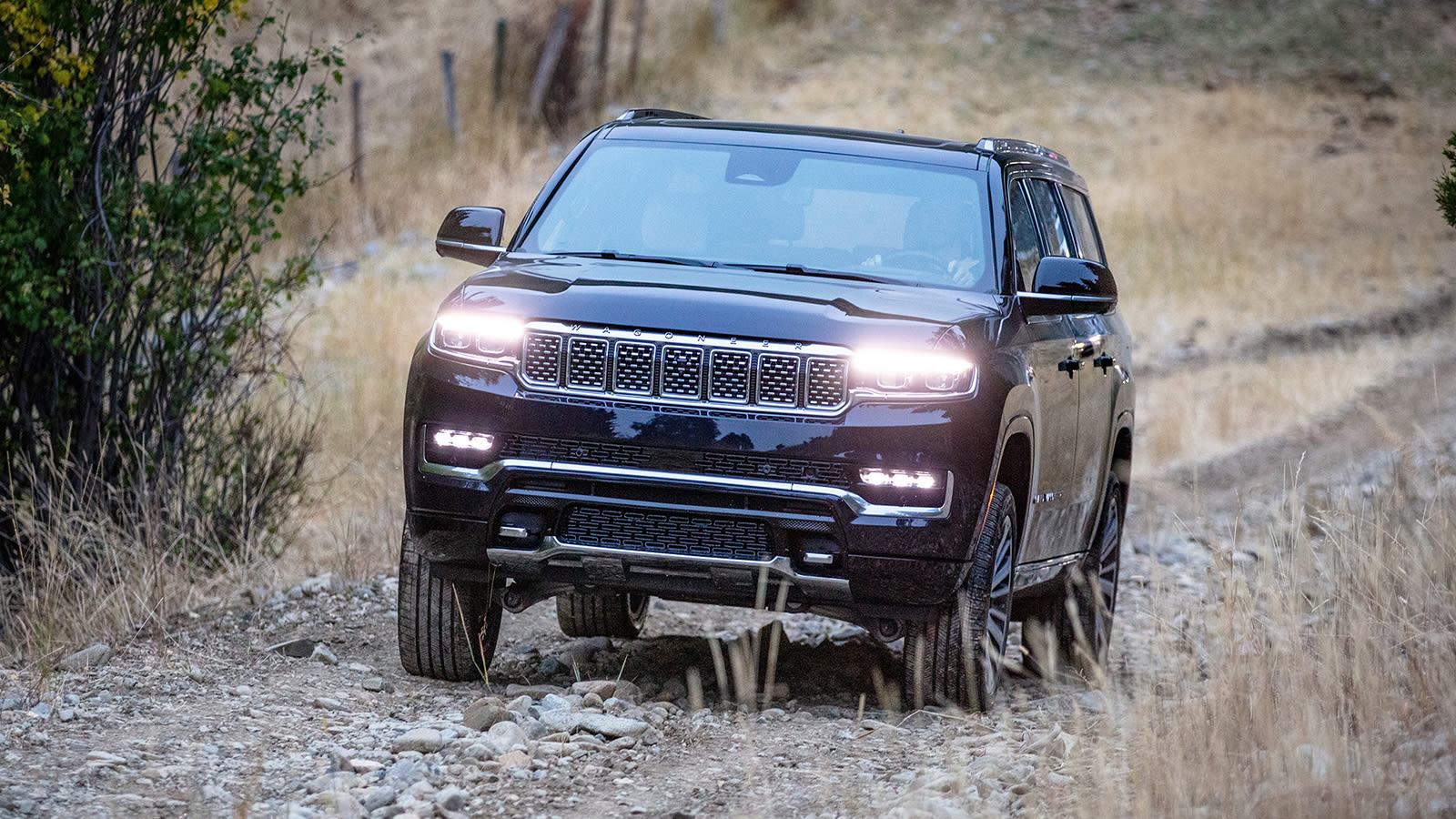
What’s the Wagoneer like to drive?
This big Jeep moves down the road like a vast ocean liner, for better and for worse. You’re always aware of its huge proportions and gargantuan weight, while the air suspension that’s standard on the Grand and optional on Wagoneer allows a fair bit of lateral rocking while making turns. One of our drivers actually clonked his head against the B pillar while turning into a parking lot. That doesn’t happen in the more sure-footed Escalade. At the same time, an ocean liner is an awfully comfortable, quiet and luxurious way to travel. The ride is exceptional, and there’s a resolute sense of stability when cruising down the highway (pun not intended).
It’s quiet, it’s comfortable and it’s (dare we say it?) almost fun to hustle. The steering is accurate and has a bit of feel to it. The GM SUVs are better in these areas, but the Jeeps are close. The Jeep is also impressively put together, with very few of the wiggles and jitters of body-on-frame SUVs. The additional length of the L models doesn’t really affect the driving experience much. It does make it a little trickier to maneuver at low speeds, with a wider turning circle and simply more vehicle to manage, but otherwise, it drives just like a regular Wagoneer
As for the experience off-road, the Wagoneer is not Trail Rated, so don’t expect it to venture to the same places a Grand Cherokee can. Its size and lack of axle articulation hold it back. It still offers as much as 10 inches of grand clearance and a low-range transfer case, though.
We haven’t had the chance to test the Wagoneer’s base 5.7-liter V8 on the road yet, but considering its power output and 6,000-pound curb weight, it seems like a fair bet that acceleration will likely only be on par with GM’s 5.3-liter V8. The Grand Wagoneer’s 6.4-liter V8 delivers smooth, quiet and effortless acceleration without the sort of go-fast noises this same engine makes in other Jeep and Dodge applications. It also swills gas like, well, an ocean liner.
The new Hurricane inline-six options are definitely the engines to get. Throttle response is admittedly a tad less sharp than the 6.4 V8, but only a tad. And what you trade in a bit of throttle response, you get back in much more low-down torque. You don’t have to work this engine very hard to get moving. The turbos spool quickly and power comes on smoothly. The Hurricane 510 version obviously feels gutsier when hammering it, but it’s a bit academic. Yes, it feels faster, but the regular Hurricane feels far from underpowered, and the gap isn’t great enough that we’d go the Grand route based on engine performance alone, especially considering the standard Hurricane’s greatly superior fuel economy.
What other Jeep Wagoneer reviews can I read?
2023 Jeep Grand Wagoneer L First Drive Review: Bigger, stronger, thriftier
Our first drive of the long-wheelbase L version of the Wagoneer, along with its twin-turbo inline-six.

2022 Jeep Grand Wagoneer First Drive Review | A (very) big return
Our first drive in the revived nameplate. We find that despite little resemblance to the original, its combination of stretch-out space, a luxe interior, a pleasant driving experienc, and stout towing capability are certainly enough to earn this Jeep its share of the lucrative market.
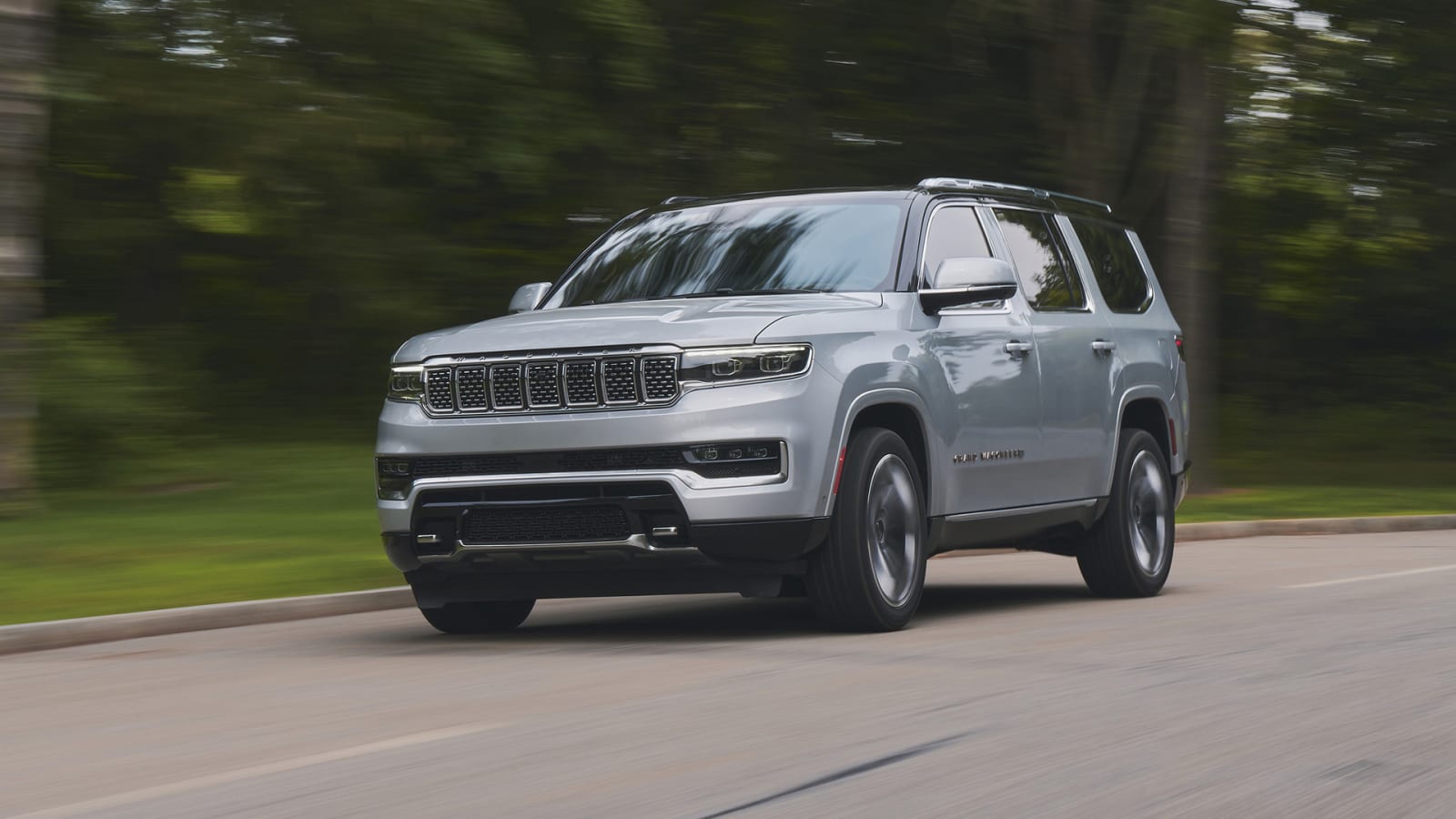
Jeep Grand Wagoneer Luggage Test | How much space behind 3rd row?
We put the standard-wheelbase version of the Wagoneer through our usual luggage test, and find it swallows more than the standard-wheelbase competition from Form and GM, while maintaining rear visibility.
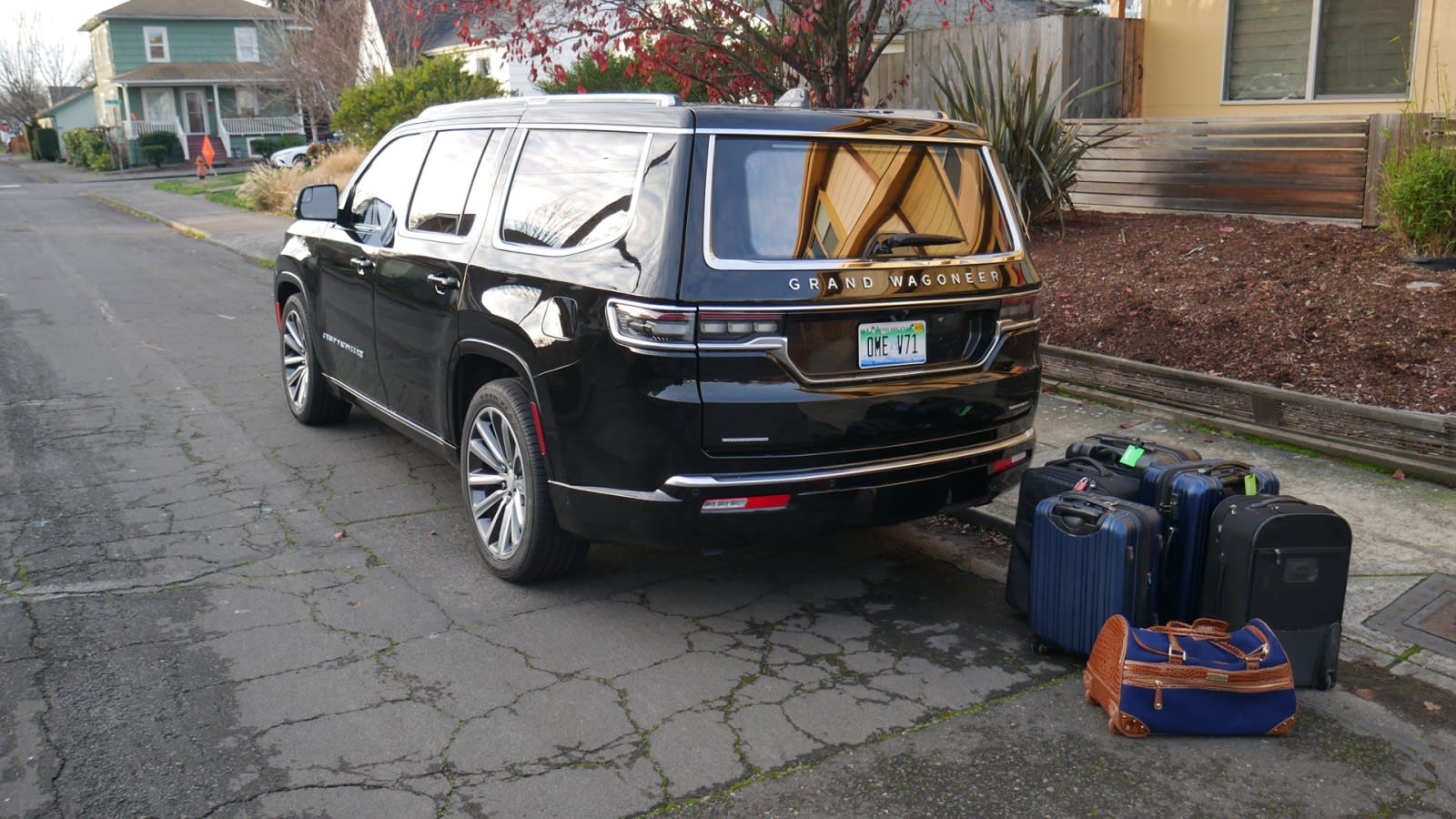
Jeep Grand Wagoneer L All My Earthly Possessions Test
Far more than a mere luggage test, Senior Editor James Riswick finds there’s no better SUV in which to move all your earthly possessions.

2022 Jeep Grand Wagoneer Interior Review | A flashy luxury oasis
Jeep takes a successful first shot at a truly luxury interior, but with a little room for improvement

2022 Jeep Grand Wagoneer McIntosh audio system: It’s the best
Road Test Editor Zac Palmer calls this high-end audio system “an audiophile’s dream in a rolling concert hall” in this opinion piece.
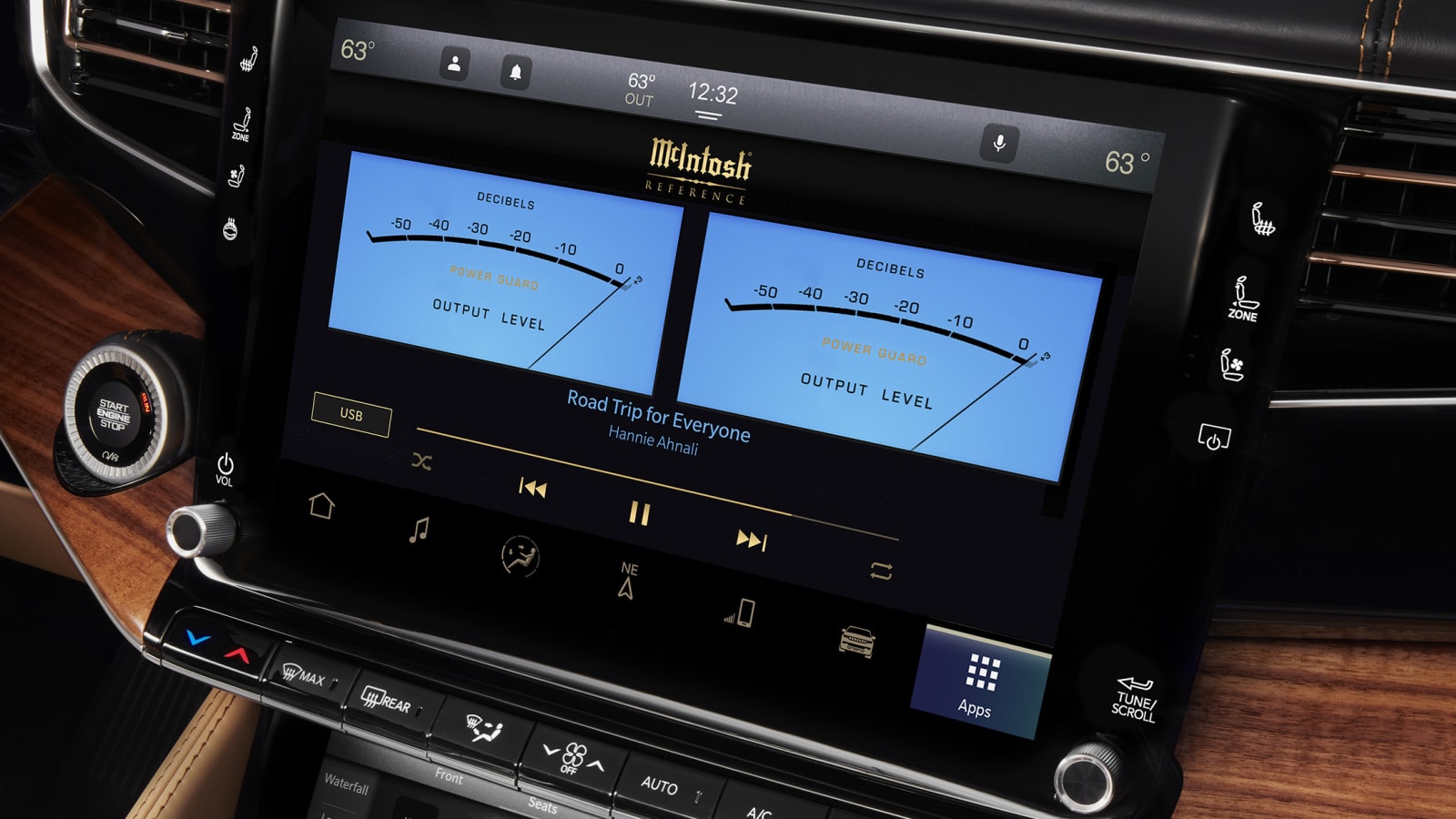
What is the 2023 Wagoneer price?
The Wagoneer suite, as one would expect from a lineup starting at around $60,000 and offering models at more than double that, offers a vast selection of available features to choose from if you’ve got the credit to cover it. It’s fairly well equipped from the get-go, with the base Wagoneer getting heated and ventilated leather-trimmed seats, Alpine audio, 10.25-inch Uconnect display with navigation, power folding mirrors and remote start, among other things. Moving up to the Grand Wagoneer offers a leap in quality and standard equipment, as well as price, with a standard air suspension, 12.3-inch display, McIntosh audio system, better leather, heated second-row captain’s chairs and more. Regardless of what luxury touches you add, we like the turbocharged I6 engines, so our shopping would put the Wagoneer Series II as our starting point.
The base Wagoneer 4×2 starts at $60,995, including the hefty $2,000 destination fee. Adding four-wheel drive in most trims tacks another $3,000 to the price across the lineup, while picking the L version adds another $4,000. The luxurious Grand Wagoneer starts at $90,640, but includes four-wheel drive as standard. Adding the L to the Grand Wagoneer also adds $4,000 across trims. To give you a sense of the full price range, the most expensive model, the Grand Wagoneer Series III Obsidian, costs $114,635 before options, but there aren’t many options not included at that point.
You can learn more about the various Wagoneer, Wagoneer L, Grand Wagoneer and Grand Wagoneer L trims and features on Autoblog’s vehicle research pages. The full price breakdown by trim, including destination, is as follows:
Wagoneer
- Wagoneer 4×2: $60,995
- Wagoneer 4×4: $63,995
- Series II 4×2: $67,725
- Series II 4×4: 71,725
- Carbide 4×2: 70,775
- Carbide 4×4: 73,775
- Series III 4×2: $73,865
- Series III 4×4: $76,865
Wagoneer L
- Wagoneer L 4×2: $64,495
- Wagoneer L 4×4: $67,495
- Series II 4×2: $70,725
- Series II 4×4: 73,725
- Carbide 4×2: 73,775
- Carbide 4×4: 76,775
- Series III 4×2: $76,865
- Series III 4×4: $79,865
Grand Wagoneer
- Grand Wagoneer: $90,640
- Series II: $97,735
- Obsidian: $103,230
- Series III: $109,995
- Series III Obsidian: $111,635
Grand Wagoneer L
- Grand Wagoneer: $94,140
- Series II: $100,735
- Obsidian: $106,230
- Series III: $112,995
- Series III Obsidian: $113,990

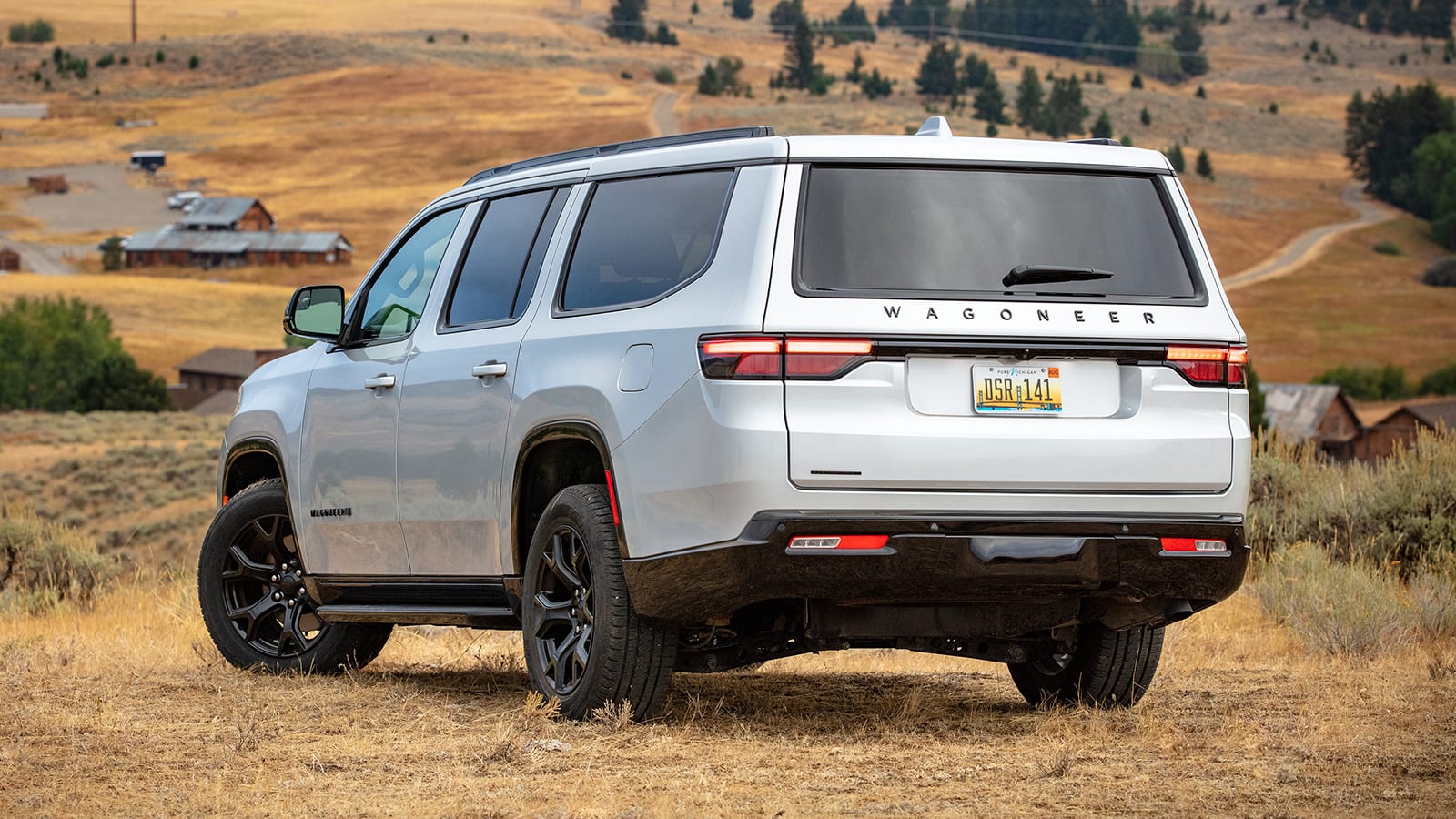
What are the Wagoneer safety ratings and driver assistance features?
Every 2023 Wagoneer comes standard with forward collision warning and automatic emergency braking, blind-spot and rear cross-traffic warning systems, trailer sway control, and front and rear parking sensors. Stop-and-go adaptive cruise control and lane-keeping assist are available on the base Wagoneer and Wagoneer L, but standard in all other trims. A 360-degree parking camera is standard on the Grand and optional on Wagoneer.
Neither NHTSA nor the Insurance Institute for Highway Safety have crash tested the Wagoneer at the time of this writing.
Related Video:
